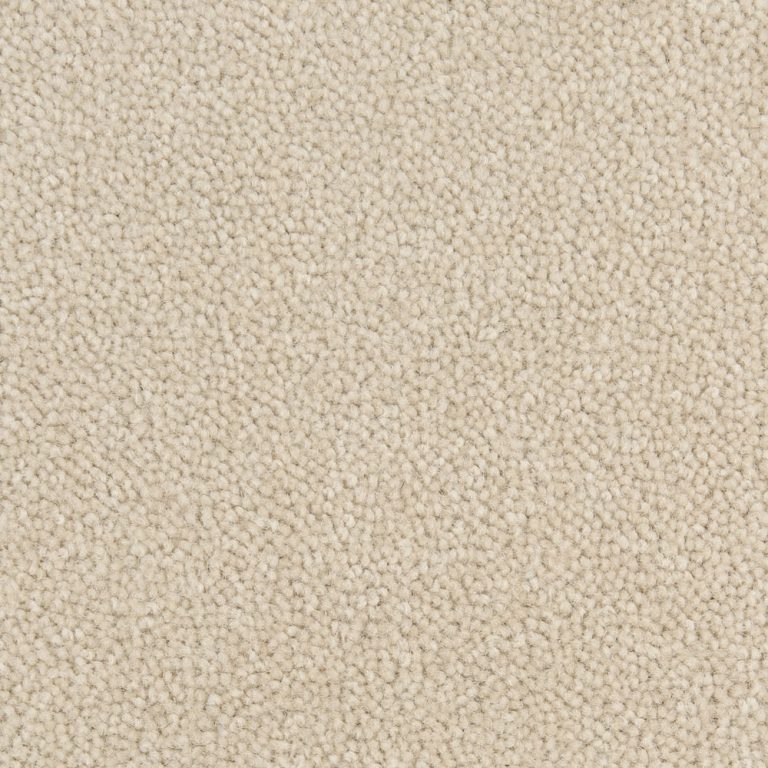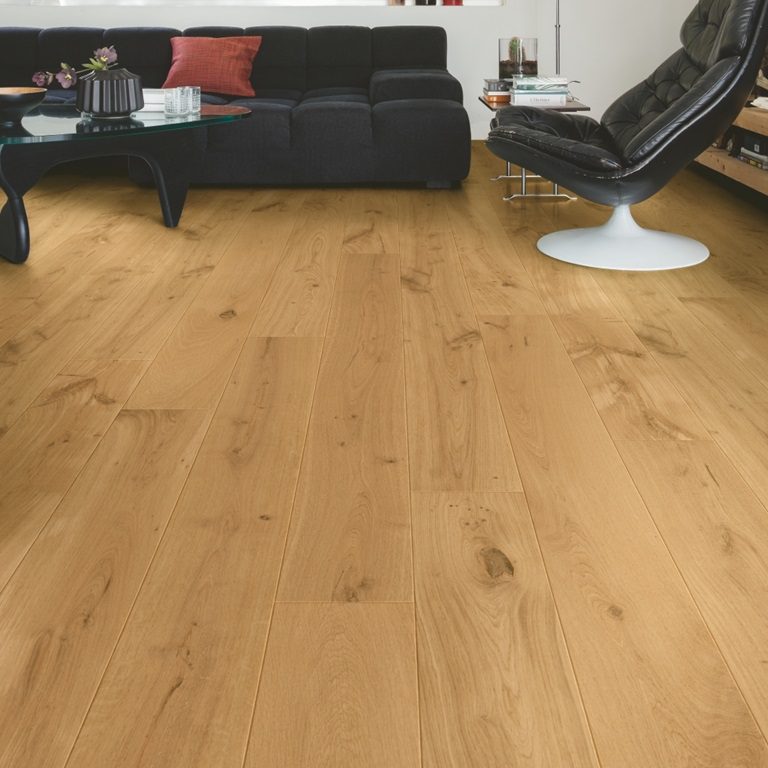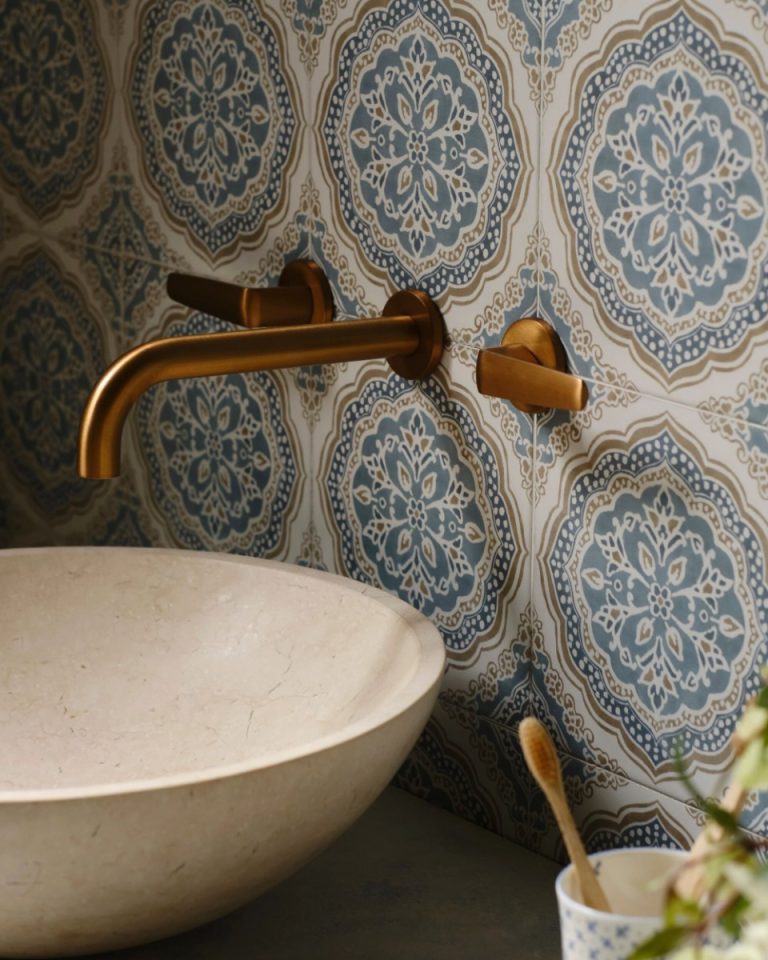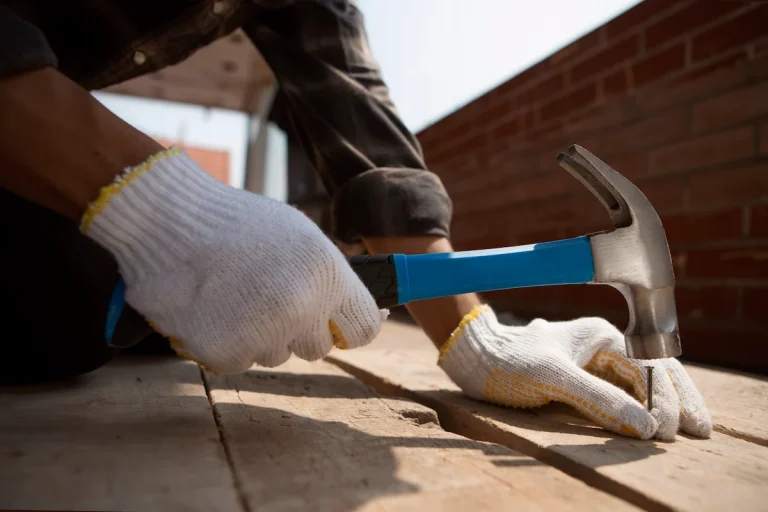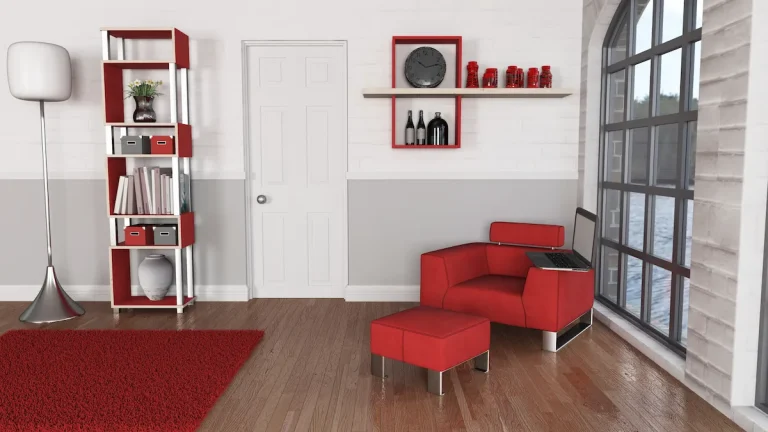As winter approaches, numerous homeowners contemplate the comfort of their wood floors during the colder months. While wood is frequently lauded for its aesthetic appeal and durability, one may question: Are wood floors cold in the winter?
This article examines the reasons why wood floors may feel colder in winter, delving into the science of heat transfer and assessing how various types of flooring influence comfort. Furthermore, it highlights the advantages and disadvantages of wood flooring in winter and provides strategies for effectively warming these surfaces. Explore this discussion to discover ways to enhance your living space during this season.
Are Wood Floors Cold in the Winter?
Wood floors, particularly hardwood flooring, may exhibit a notable chill during the winter months due to several factors, including temperature and humidity variations. While many homeowners value the aesthetic appeal and durability of hardwood flooring, they may question the suitability of wooden floors for winter comfort.
The perception of coldness is often intensified by reduced indoor temperatures and inadequate insulation, resulting in higher energy costs and potential discomfort. Therefore, it is essential for homeowners to understand the interaction between hardwood materials and environmental conditions when evaluating their flooring options during the colder seasons.
Why Do Wood Floors Feel Colder in the Winter?
Wood floors can experience a noticeable decrease in temperature during the winter months due to various factors, including the type of wood used, its thermal properties, and the ambient humidity levels. The distinction between hardwood and softwood is significant in terms of temperature retention, as different types of wood have varying capacities to absorb and release moisture, which directly impacts the perceived coldness underfoot.
Furthermore, the floor’s exposure to lower temperatures can worsen this sensation, prompting many individuals to explore solutions for increased comfort during the colder season.
How Does Heat Transfer Work?
Heat transfer is the process by which thermal energy moves from a warmer object to a cooler one, and it plays a crucial role in the thermal characteristics of hardwood floors across different seasons.
During winter, heat from the indoor environment can escape through the surface of hardwood floors, particularly when insulation is inadequate, resulting in a cold sensation against bare feet.
A comprehensive understanding of how thermal mass and insulation influence heat retention in wooden floors can assist homeowners in making informed decisions regarding their heating solutions. The thermal mass of hardwood absorbs heat during the day, which can be advantageous in stabilising indoor temperatures. This inherent property contributes to maintaining a warm ambience when complemented by adequate insulation, thereby reducing the dependency on artificial heating systems.
The following strategies can enhance indoor comfort, particularly during colder months:
- Investing in quality insulation materials
- Utilising area rugs to improve comfort
- Implementing radiant floor heating systems
Each of these approaches can significantly enhance the indoor climate, ensuring a more pleasant living environment.
Why Do Some Floors Feel Colder Than Others?
The perception of coldness in flooring can vary due to several factors, including the material used, the thickness of the flooring, and the level of insulation present in the subfloor. The distinction between hardwood and softwood flooring can significantly influence how cold or warm a floor feels, with hardwood generally offering superior insulation properties.
Additionally, the configuration of the home’s heating system and the presence of insulating layers can contribute to the overall comfort of wooden floors during the winter months.
When assessing flooring options, it is essential to consider not only the aesthetic appeal but also the thermal properties that various materials provide. Each type of flooring exhibits distinct characteristics:
- Hardwood – Renowned for its density, hardwood tends to retain heat more effectively, resulting in a warm feel underfoot.
- Softwood – Typically lighter and less dense, this material may feel cooler, particularly in winter.
- Tile – Although often cold to the touch, heating systems installed beneath tiles can create a comfortable ambience, mitigating the sensation of coldness.
- Carpet – With its insulating fibres, carpet can provide an immediate sense of warmth; however, it may lack durability compared to wood.
Integrating effective subfloor insulation alongside advanced heating systems can significantly reduce the sensation of coldness, thereby enhancing the experience of wooden flooring. Homeowners can explore various solutions, such as underfloor heating or insulating boards, to create a comfortable living environment, ultimately increasing the enjoyment of their flooring selection.
The Benefits of Wood Floors in the Winter
Wood floors, especially refined hardwood flooring, present a distinctive array of advantages during the winter months, contributing to both comfort and energy efficiency within the home.
The natural insulation properties of hardwood assist in maintaining a more stable indoor temperature, thereby reducing the reliance on excessive heating and resulting in lower energy costs. Moreover, wooden floors create a warm aesthetic that enhances the visual appeal of any space, making them a preferred option for winter interiors.
1. Natural Insulation
One of the primary advantages of hardwood flooring is its natural insulation properties, which contribute to maintaining a comfortable indoor temperature during the winter months. Unlike many other materials, hardwood serves as an effective insulator, minimising heat loss and enhancing energy efficiency within the home. This inherent insulation not only fosters a cosy atmosphere but also helps to reduce heating costs, rendering hardwood floors a practical choice for winter. Additionally, hardwood is an environmentally friendly option that aligns with sustainability efforts.
Along with its insulating characteristics, the specific type of wood selected plays a crucial role in the overall effectiveness of hardwood flooring as an energy-efficient solution. Different species of wood, such as oak, maple, and cherry, exhibit varying densities, which can influence their thermal resistance.
For example:
- Oak: Renowned for its durability, oak hardwood possesses excellent insulating properties, effectively trapping warmth.
- Maple: With its fine grain, maple offers a warm feel underfoot, making it ideal for maintaining comfort during colder months.
- Cherry: This type not only enhances aesthetic appeal but also contributes to a warmer indoor climate through its natural insulation.
By carefully selecting the appropriate wood type, homeowners can significantly improve their thermal comfort, reduce reliance on heating systems, and ultimately create a more energy-efficient living environment during the winter season.
2. Warmth Underfoot
Hardwood floors can provide a considerable amount of warmth underfoot, especially when complemented by area rugs or suitable heating solutions. Their capacity to retain heat, along with appropriate arrangements, contributes to a comfortable environment during the winter months. This warmth not only enhances the aesthetic appeal of a space but also promotes increased comfort for both homeowners and guests.
To optimise the inviting atmosphere that hardwood floors provide in colder seasons, it is advisable to layer area rugs strategically.
- Selecting thicker, plush rugs can significantly enhance insulation and softness.
- Natural fibres, such as wool, are particularly suitable due to their warmth and durability, while also adding texture.
- Rugs featuring vibrant colours or intricate patterns can serve as focal points that enliven the expanse of hardwood flooring.
Furthermore, positioning the rugs in high-traffic areas or near seating arrangements can create inviting zones that encourage relaxation. It is also essential to ensure that the rugs are appropriately sized, allowing some visible flooring to remain exposed, thereby enhancing the overall aesthetic without overwhelming the room.
3. Easy to Clean
One of the often-overlooked advantages of refined hardwood floors is their ease of maintenance, particularly during the winter months when mud and debris are frequently brought indoors. Hardwood floors can be cleaned and maintained with relative simplicity, ensuring they retain their beauty and hygienic qualities even in challenging winter conditions. This convenience enhances the overall appeal of hardwood flooring, as it requires significantly less effort to keep clean compared to carpets or other flooring materials.
During winter, the accumulation of moisture and dirt can present challenges for homeowners; however, maintaining hardwood floors becomes notably easier. Regular sweeping or vacuuming effectively removes surface dirt, while a damp mop with a gentle cleaner can address stubborn grime without damaging the finish. Monitoring moisture levels is crucial to prevent expansion and contraction of the boards.
Utilising a microfiber mop proves especially effective for capturing fine particles. Additionally, employing a pH-neutral wood cleaner specifically recommended for hardwood surfaces helps preserve the floor’s lustre. Incorporating organic materials in the cleaning process can further enhance the eco-friendliness of maintenance.
Furthermore, placing mats at entryways can significantly reduce the amount of debris tracked indoors, thereby protecting the beauty of the flooring. By adopting these straightforward cleaning strategies, including the use of insulating weather strips, homeowners can ensure the longevity and aesthetic appeal of hardwood flooring, enabling it to endure the rigours of winter while maintaining a welcoming environment.
The Drawbacks of Wood Floors in the Winter
Despite the numerous advantages of wooden flooring, there are specific drawbacks associated with winter that homeowners should take into account, particularly concerning thermal mass, moisture levels, and the potential for draughts.
Although hardwood provides a degree of natural insulation, it may not be adequate for maintaining warmth on exceptionally cold days, which can result in discomfort. The use of ceiling fans to circulate warm air from central heating can reduce this issue.
Furthermore, gaps between the boards can permit cold draughts, adversely affecting the overall temperature of the indoor environment. Using insulating weather strips can help reduce draughts effectively.
1. Lack of Thermal Mass
One significant drawback of wood flooring is its limited thermal mass, which can negatively impact indoor comfort during the winter months. Unlike materials such as stone or tile, hardwood does not retain heat as effectively, resulting in a cooler sensation underfoot when temperatures drop. This limitation may lead to increased energy consumption for heating, as homeowners might need to raise the thermostat to maintain a comfortable environment. The use of a smart thermostat can optimise heating efficiency. This challenge is particularly pronounced in regions that experience considerable seasonal temperature fluctuations.
To address these concerns, many homeowners may consider alternative flooring options that provide superior thermal mass benefits, such as beech or other hardwood products.
- Stone flooring materials, such as slate or granite, have the capacity to absorb and retain heat, thereby creating a more inviting atmosphere during colder months.
- Ceramic tiles, recognised for their excellent thermal properties, can also contribute to enhanced energy efficiency.
- Another viable option is concrete, which, despite its industrial aesthetic, offers exceptional thermal mass and can be polished to achieve an elegant appearance.
By selecting flooring that improves thermal retention, individuals can experience heightened comfort levels while reducing reliance on heating systems, ultimately resulting in significant energy savings.
2. Lack of Radiant Heat
Wood floors may not provide the advantages of underfloor heating, which can significantly enhance comfort during colder months. Unlike flooring materials specifically designed for underfloor heating systems, hardwood does not effectively transfer warmth from underneath, often resulting in a cooler surface. This limitation can pose challenges for homeowners seeking to achieve optimal warmth underfoot without the use of supplementary heating solutions.
For many individuals, the comforting sensation of warm materials on brisk winter mornings is crucial for creating a cosy living environment. While wood floors contribute aesthetic appeal and a sense of natural beauty to a home, their lack of efficient heat retention can detract from overall comfort. Homeowners experiencing this issue might consider the integration of underfloor heating systems to address the thermal inefficiencies associated with hardwood floors. These systems can be installed beneath the flooring, allowing heat to radiate upwards and providing consistent warmth throughout the room.
The compatibility of various heating options, such as electric or hydronic heating, can be explored. Additionally, ensuring adequate insulation can enhance energy efficiency and warmth retention. When selecting flooring, consider the benefits of hardwood vs softwood in terms of thermal properties.
Ultimately, the thoughtful combination of appropriate heating solutions and carefully selected flooring, like hardwood boards, can transform a home into a sanctuary during the coldest months.
3. Potential for Drafts
A common issue associated with wooden floors is the potential for draughts, particularly when gaps exist between the boards or when insulation is inadequate. These draughts can permit cold air to infiltrate, resulting in wooden floors feeling even colder and compromising the overall comfort of the room. Homeowners may need to undertake measures to seal these gaps, thereby ensuring improved insulation and reducing any discomfort related to draughts.
During the winter months, draughts can significantly diminish the experience of walking on wooden floors, rendering them uninviting and chilly. To enhance warmth and comfort, it is essential to address these gaps effectively. Employing insulating weather strips is a practical initial step, as they can be applied around the perimeter of the flooring or at the base of doors to minimise cold air intrusion.
- Sealing gaps between floorboards with caulk can further prevent draughts from establishing.
- Regular maintenance, such as inspecting for loose floorboards or cracks, enables homeowners to proactively address potential issues that may contribute to a draughty environment.
- The placement of rugs or carpets can add an additional layer of insulation, improving the overall comfort of the flooring during colder months.
By implementing these preventive measures, homeowners can cultivate a more comfortable living space, even when external temperatures drop significantly.
How to Make Wood Floors Warmer in the Winter
Enhancing the warmth of wooden floors during the winter months is a prevalent concern among homeowners, and several effective strategies can be employed to achieve increased comfort.
The incorporation of area rugs, the use of underfloor heating systems, and the improvement of insulation are practical solutions that can significantly reduce the cold sensation often associated with wooden flooring.
Each of these methods not only contributes to a warmer environment but also enhances the overall aesthetic appeal of the space.
1. Add Rugs or Carpets
Incorporating rugs or carpets into hardwood floors represents one of the most straightforward and effective methods to enhance warmth and comfort during the winter months. Area rugs not only provide insulation against cold surfaces but also contribute a stylish element to interior décor. They assist in trapping heat, thereby creating a cozier atmosphere, making them an essential accessory during winter.
Selecting the appropriate types of rugs can significantly enhance both the insulating properties and aesthetic appeal of a living space. Plush, thick area rugs made from materials such as wool or synthetic fibres can notably improve thermal comfort while offering a soft texture underfoot. Rugs with a larger surface area are particularly effective in covering hardwood floors, preventing heat loss and enhancing the overall warmth of the room.
To maximise the benefits of area rugs, consider the following recommendations:
- Choose naturally insulating materials such as wool or sisal, which are both warm and inviting.
- Consider layering rugs to increase comfort and add texture to the space.
- Ensure proper placement to facilitate heat circulation, avoiding overlaps where feasible.
Regular maintenance of these rugs, including vacuuming and periodic professional cleaning, will help preserve their insulating effectiveness and visual appeal over time.
b. Use Underfloor Heating
Incorporating underfloor heating systems can significantly enhance the warmth and comfort of wooden floors during the winter months. These systems provide radiant heat directly beneath the surface, ensuring a cosy feel underfoot while reducing reliance on traditional heating methods. Additionally, underfloor heating is compatible with hardwood flooring, making it an excellent investment for homeowners seeking to improve their comfort during the colder seasons.
This innovative heating solution operates by circulating warm water or electric coils beneath the floor surface, creating a gentle and consistent warmth that rises evenly throughout the space. Unlike traditional radiators, which can create cold spots, underfloor heating maintains a steady temperature that is pleasant to the touch. Notably, this method is both energy-efficient and environmentally friendly.
Compatibility with hardwood floors is essential to ensure longevity and stability. When planning an installation, it is important to consider the following factors:
- Temperature Regulation: It is advisable to maintain a maximum surface temperature of 27 degrees Celsius (81 degrees Fahrenheit) to prevent damage to the wood.
- Insulation Layers: Proper insulation beneath the heating system can enhance efficiency and help retain warmth.
- Moisture Management: Utilising moisture barriers is crucial to protect the wood from humidity fluctuations that may lead to warping or cracking.
Regular maintenance of the system is vital; it is recommended that the system be inspected annually to optimise performance and ensure safety. With meticulous attention to these details, underfloor heating can serve as a luxurious addition that transforms the winter experience in any home.
c. Insulate the Subfloor
Insulating the subfloor beneath wooden floors, particularly hardwood flooring, represents an effective strategy for enhancing warmth and energy efficiency during the winter months. Proper insulation minimises heat loss, establishing a barrier against cold air and ensuring that the warmth generated within the home is retained where it is most needed. This proactive measure not only improves occupant comfort but can also lead to reduced energy costs, making it a prudent choice for homeowners.
When considering effective insulation techniques, homeowners have the opportunity to explore a variety of methods and materials that address their specific requirements. Some popular options include:
- Foam board insulation: This rigid material can be easily cut to fit snugly into tight spaces, providing excellent thermal resistance.
- Fibreglass batts: Commonly available, these can be installed between floor joists to block draughts and retain heat.
- Reflective radiant barriers: Particularly suitable for warmer climates, these barriers reflect heat away from the subfloor, aiding in maintaining cooler indoor spaces.
Additionally, sealing any gaps or cracks with sealant can significantly enhance insulation effectiveness. It is also advisable to consider the installation of a vapour barrier to prevent moisture accumulation, especially in areas that are prone to dampness.
By implementing these measures, homeowners can ensure that their subfloors are well-insulated, contributing to a comfortable and energy-efficient environment throughout the colder months.
d. Seal Any Gaps or Cracks
Sealing any gaps or cracks in hardwood flooring, including gaps between boards, is a crucial measure in preventing draughts and enhancing insulation during the winter months. These minor openings can permit cold air to infiltrate, resulting in significantly colder floors. By utilising insulating weather strips or sealants, homeowners can effectively close these openings, thereby creating a draught-free environment that retains heat more efficiently.
Addressing these imperfections not only enhances energy efficiency but also contributes to the overall comfort and aesthetic appeal of a home. Effective sealing can prevent moisture intrusion, which may lead to warping or further damage over time.
The following are recommendations for effective sealing:
- Select high-quality sealants specifically designed for hardwood floors, as they ensure a lasting bond and provide effective protection.
- Consider using caulk for narrow cracks and apply wood filler for larger gaps to achieve a seamless appearance.
- It is essential to ensure a clean surface when applying these materials to achieve optimal adhesion. Cleaning and preparing the area will enhance the longevity of the seal.
By undertaking this seemingly minor task, homeowners can significantly enhance the warmth and comfort of their indoor environments during the colder months.
If you’re concerned about the chill of wood floors in the winter, consider pairing them with warm textiles or radiant heating options to maintain comfort. At TEKA Flooring, our expert team is ready to help you choose the best option for your home and ensure your floors remain beautiful and comfortable year-round.
Ready to warm up your space with stunning wood floors? Reach out to TEKA Flooring today and let us help you create the perfect environment, no matter the season!
Read also:



























